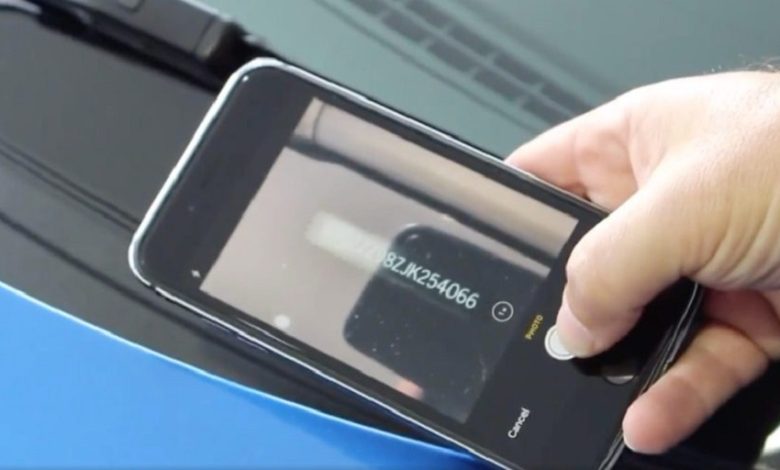Find RPO Codes by VIN: The Easiest Way to Unlock Your Car’s Build Sheet

When buying a used car or maintaining your current vehicle, understanding its specifications is crucial. Regular Production Option (RPO) codes reveal detailed information about a car’s original equipment, features, and build details. By accessing these codes, you gain insight into your vehicle’s history and configuration. Fortunately, Trade Car Hub offers tools and resources to simplify this process, helping car owners and buyers make informed decisions. This article explores how to find RPO codes using a Vehicle Identification Number (VIN), providing a clear, step-by-step guide to unlock your car’s build sheet.
What Are RPO Codes?
RPO codes are three-character alphanumeric codes used by General Motors (GM) and some other manufacturers to identify specific features, options, and equipment included in a vehicle during production. These codes cover everything from engine type and transmission to interior trim and safety features. For example, an RPO code like “Z71” might indicate an off-road package, while “G80” could signify a limited-slip differential. Knowing these codes helps you verify a car’s original configuration, which is especially useful when buying a used vehicle or ordering replacement parts.
To understand your car’s build, you need to know how to find RPO codes using VIN. This process connects your vehicle’s unique identifier to its factory specifications, ensuring you have accurate details about its production. Whether you’re a car enthusiast or a casual owner, accessing RPO codes empowers you to make better decisions about maintenance, upgrades, or resale.
Why RPO Codes Matter
RPO codes provide a window into your vehicle’s original design. They confirm whether a car has specific features, such as advanced safety systems or performance upgrades, which can affect its value and functionality. For instance, when purchasing a used GM vehicle, RPO codes help verify if the car matches the seller’s claims about its trim level or optional equipment. Additionally, mechanics use these codes to order precise parts, avoiding costly mistakes. By unlocking this information, you gain confidence in your vehicle’s history and performance potential.
Moreover, RPO codes are essential for car enthusiasts restoring classic vehicles or modifying modern ones. They ensure modifications align with the car’s original build, preserving its authenticity. For example, Car and Driver
often highlights how understanding a vehicle’s specs enhances ownership experiences, emphasizing the importance of accurate build data.

How to Find RPO Codes Using Your VIN
Finding RPO codes starts with your vehicle’s VIN, a 17-character code unique to each car. The VIN acts like a fingerprint, encoding details about the manufacturer, model, and production year. Here’s a step-by-step guide to locate your RPO codes:
Step 1: Locate Your VIN
The VIN is typically found in several places, such as the driver’s side dashboard (visible through the windshield), the driver’s side door jamb, or on your vehicle’s title and registration documents. Write down the full 17-character code carefully, as accuracy is critical.
Step 2: Check the RPO Sticker
Many GM vehicles have an RPO sticker in the glove compartment, trunk, or spare tire well. This sticker lists multiple RPO codes specific to your car. However, not all vehicles have this sticker intact, especially older models. If the sticker is missing or illegible, proceed to the next steps.
Step 3: Use Online VIN Decoders
Several online tools can decode your VIN to reveal RPO codes. Websites like Trade Car Hub provide user-friendly platforms to input your VIN and receive a detailed build sheet. Simply enter the VIN, and the tool generates a report listing the RPO codes and their descriptions. These services are often free or low-cost, making them accessible for most users.
Step 4: Contact the Manufacturer or Dealership
If online tools don’t provide enough detail, contact a GM dealership or the manufacturer’s customer service. Provide your VIN, and they can access the vehicle’s build sheet, including RPO codes. Keep in mind that some dealerships may charge a small fee for this service, but it’s a reliable option.
Step 5: Interpret the RPO Codes
Once you have the codes, use an RPO code database to understand their meanings. Trade Car Hub and other automotive websites offer comprehensive RPO code lists, explaining what each code represents. For example, “L83” might indicate a specific V8 engine, while “MYC” could denote a six-speed automatic transmission.
Tips for Accurate Results
To ensure you get the correct RPO codes, follow these tips:
- Double-check the VIN for accuracy before submitting it.
- Use reputable websites or manufacturer resources to avoid outdated or incorrect data.
- Compare the RPO codes with your vehicle’s visible features to confirm consistency.
- Save the build sheet for future reference, especially for maintenance or resale.
By following these steps, you can confidently access and understand your vehicle’s RPO codes, unlocking its full build history.
Benefits of Knowing Your RPO Codes
Accessing RPO codes offers several advantages. First, it verifies the vehicle’s authenticity, ensuring you’re not misled by inaccurate seller claims. Second, it aids in maintenance by identifying the exact parts needed for repairs. For example, knowing whether your car has a specific transmission type prevents ordering incompatible components. Third, RPO codes enhance resale value by providing potential buyers with transparent build information, increasing trust.
Additionally, car enthusiasts benefit from RPO codes when customizing or restoring vehicles. They can confirm whether a car has rare or high-performance options, making it more valuable in collector circles. According to Motor Trend, detailed vehicle histories, including RPO codes, significantly influence classic car valuations.
Common Challenges and Solutions
While finding RPO codes is straightforward, some challenges may arise. Older vehicles may lack RPO stickers due to wear or replacement parts. In such cases, online VIN decoders or manufacturer records are your best options. Another issue is incomplete online databases, which may not list all RPO codes for rare or discontinued models. To overcome this, cross-reference multiple sources or consult a dealership.
Additionally, some VIN decoders require payment for detailed reports. If budget is a concern, start with free tools like Trade Car Hub before exploring paid options. Patience and persistence are key to uncovering your car’s full build sheet.
Read More Also: Device-as-a-Service Trends Shaping the Future of Work
Conclusion
Finding RPO codes using your VIN is a simple yet powerful way to unlock your car’s build sheet. By following the steps outlined—locating your VIN, checking the RPO sticker, using online decoders, or contacting the manufacturer—you can access detailed information about your vehicle’s original features. This knowledge enhances maintenance, verifies authenticity, and boosts resale value. With resources like Trade Car Hub, the process is easier than ever, empowering car owners to make informed decisions. Whether you’re a casual driver or a car enthusiast, understanding your RPO codes brings clarity and confidence to your automotive journey.
Read More Also: Houston Personal Injury Lawyers: Free Consultations
Frequently Asked Questions
What are RPO codes?
RPO codes are three-character codes used by GM to identify a vehicle’s features, such as engine type, transmission, and optional equipment.
Where can I find my vehicle’s VIN?
The VIN is located on the driver’s side dashboard, door jamb, or on your vehicle’s title and registration documents.
Are online VIN decoders reliable?
Yes, reputable platforms like Trade Car Hub provide accurate RPO code reports, but always verify the VIN and cross-check results.
Can I get RPO codes for non-GM vehicles?
RPO codes are primarily used by GM. Other manufacturers may use different systems, so check with the specific brand.
Why is my RPO sticker missing?
Older vehicles or those with replaced parts may lack RPO stickers. Use online decoders or contact the manufacturer for assistance.




